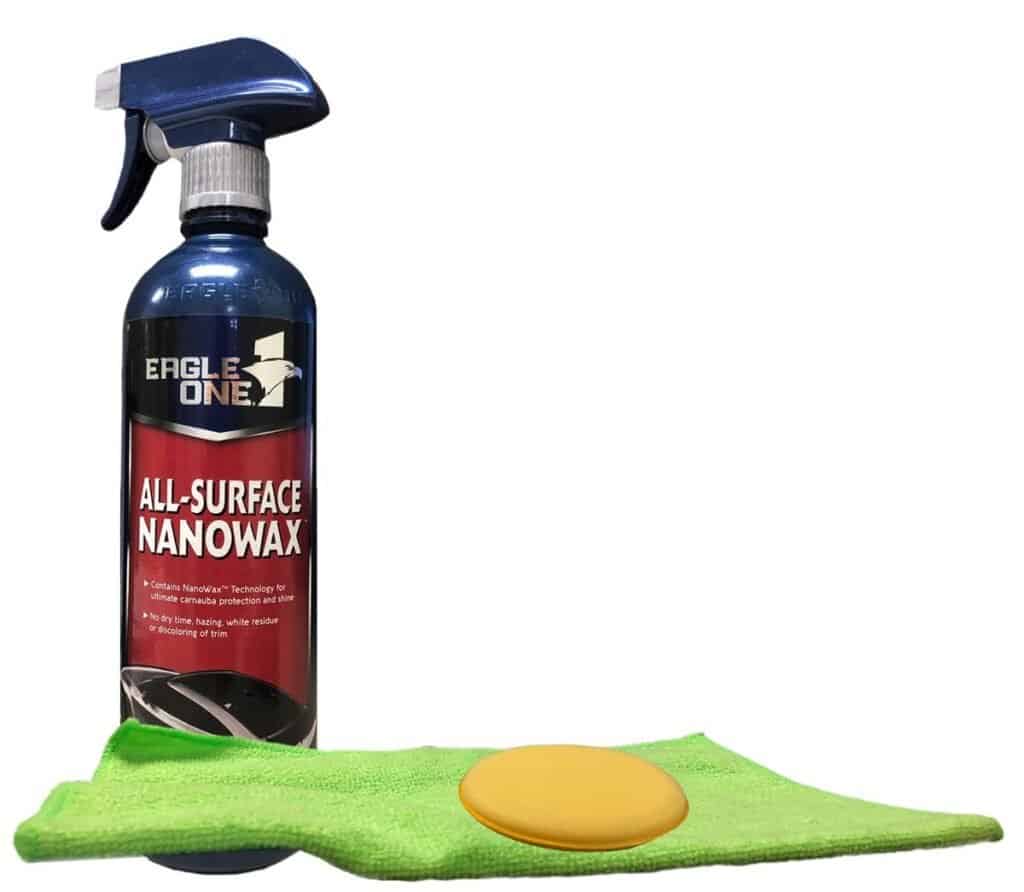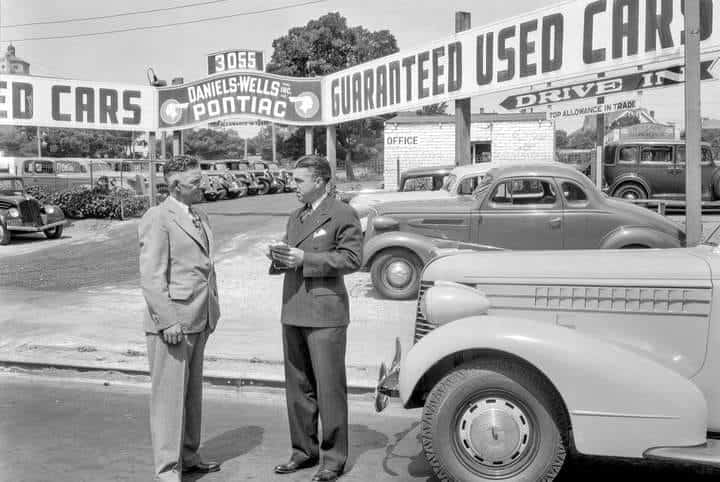In the world of product marketing, having the right name on your label has just as much to do with informing the customer, as it does with catchy keywords and clever phrasing.
This often leads to a deluge of descriptors, trademarked catchphrases, and loads of look-alike nomenclatures. It also tends to cause quite a bit of buyer confusion, as the barrage of information slapped on the label makes an already oversaturated market feel all the more convoluted.
For instance, have you ever heard of something called “nanowax?” Do you know what it is, or what it does? Are the wax particles really that small? Does it contain other forms of nanomaterial like typical polymer coatings, or is it just another fancy name for car wax? What sort of protection, shine, and water beading does it offer over a “non-nanowax?”
Let’s ditch the marketing jargon, and get right down to the automotive paint protection nitty-gritty, shall we? It’s time to see what “nanowax” is really made of, by pitting nanowax against AvalonKing’s SiO2 Ceramic Boost Spray.
How Nanowax is Marketed

Commonly considered to be the original nanowax product, Eagle One’s All Surface Nanowax comes in a value-sized 23-ounce spray bottle, and sports a sub $10 price point. It’s the type of product designed to appeal to people on a tight budget. A check-out line impulse buy that you’re not entirely sure about, but because you recognize the brand name, you go ahead and toss it in your cart anyway.
Marketed as an easy-to-use spray-on wax that utilizes “Nanowax Technology,” the Eagle One brand claims that this product creates a superior carnauba protective layer and shine. The brand also states that its hydrophobic properties repel water and offer a smidge of UV protection.
Sprayed on a dry and clean automotive surface, you wipe away any residue with a well-made microfiber towel, before moving on to the next section. Apparently nanowax does not require any dry time, and therefore is not prone to hazing or causing the discoloration of things like unpainted plastic trim.

As for the “nano” part of the equation, that only comes into play when the product is applied to paint, where ultra tiny carnauba wax particles create a mirror-like shine by filling-in scratches. This seems to be a valid point, as even non-nano carnauba waxes are quite good at filling in microscopic imperfections and boosting shine on painted surfaces.
In regard to Eagle One’s proprietary nanowax blend, the company states that it is cationic, which is scientific speak for carrying a positive charge. Repelling other positively charged particles is the purpose for this additional “ingredient,” as it prevents things like dust and airborne debris from clinging to a surface, while boosting water repellency as well.
However, in the case of Eagle One’s All Surface Nanowax, UV protection and shine are its primary objectives, followed by ease of application, and maintaining the ability to be used on all hard exterior automotive surfaces.
But claiming that a $7 spray-on carnauba wax product “…provides a protective seal on your ride’s paint that can last for months…” seems highly suspicious, and as you shall soon see, you have good reason to remain suspect of such wild claims.
What’s Nanowax Really Made Out Of?

So what level of protection can you expect from a nanowax? A closer look at the chemical composition of Eagle One’s All Surface NanoWax reveals that there is no recorded level of carnauba wax in this product, so no one really knows exactly how strong it is.
A safety data sheet found on Eagle One’s website further emphasizes this nanowax product’s simplicity, as it only contains five ingredients: water, carnauba wax, a surfactant disperser, a UV inhibitor, and a preservative.

Broken down to its bare bones, nanowax appears to be little more than a watered-down carnauba wax that has been positively charged, and then further thinned with chemicals for easy application.
Does it work well at creating a shiny surface and providing water-repelling properties? YouTube tests and customer reviews seem to think so. Just don’t expect this stuff to hold up against things like decontamination chemical sprays, acid rain, and intense forms of pH exposure.
“
-Anonymous Reviewlooks like water and does as much good as water.”
Nanowax’s weaknesses stem from the fact that it relies upon carnauba wax as its primary provider of protection and shine. While this naturally derived product does indeed offer additional benefits in the shine and scratch obfuscating departments, it does very little for vehicle owners who are in search of longevity or impressive protection results.
And while you will see water beads materialize while washing your vehicle or on a rainy day, you’ll still have to contend with things like water spots once the sun comes out.
Quick Nerd Note: If you want to learn more about traditional paint protectants, be sure to check out our in-depth investigation into car wax. It will tell you everything you need to know about natural and synthetic versions of wax protectants.
Why AvalonKing SiO2 Ceramic Boost Spray is a Superior Product

While pitting a modified carnauba nanowax spray against a silica/silicon dioxide reinforced ceramic coating booster spray may seem like comparing apples to oranges, they are still in the same proverbial protective coating fruit bowl.
For instance, both products are designed to add brilliant shine, protection, and repellent properties to a vehicle’s exterior. Ceramic coating sprays and spray-on waxes are also both engineered and marketed toward those looking for an easy DIY application, and/or a quick detailing solution. So yes, they are competing with one another on the same shelf.
The difference between a ceramic car coating spray and a spray-on wax, is that an SiO2 heavy ceramic spray absolutely pummels the latter in both protection and longevity.
While wax sprays offer excellent shine and impressive water beads, they only last about a month (or less) on average, and then require a full removal and reapplication. This lifespan applies to nanowax as well, for it does not contain SiO2, and therefore is unable to create a rock-hard, chemical resistant ceramic structure.
“The general rule of wrench is that the higher the SiO2 percentage, the stronger the coating is going to harden, the more durable it will become, and the longer it will last.”
-AvalonKing
Also, being that nanowax utilizes carnauba wax, applying it to a 9H-rated ceramic coating for cars causes smearing and contamination to form. A cured nano-ceramic coating is extremely hydrophobic, and being that it is already in place and far more resilient, it will reject whatever touches it, including nanowax.
In contrast, the industry-leading 20% SiO2 content found within AvalonKing’s SiO2 Ceramic Boost Spray gives you up to six months of superior DIY nano-coating protection. That includes protection from both organic and inorganic contaminants, as well as things like UV rays, harsh cleaning chemicals, and extreme heat.
Being that it does not contain any wax, you also get the benefit of being able to use AvalonKing’s SiO2 Ceramic Boost Spray as either a stand-alone protectant spray or as a method of rejuvenating an existing Armor Shield IX nano-ceramic coating kit. It also creates an insane amount of shine, generates unbeatable water beading properties, and comes with its own applicator pad.
Parting Shots

When it comes to deciding whether a nanowax or a quality ceramic spray are right for you and your ride, you are going to have to decide whether you want to take the cheap and temporary route, or opt for a far more long-lasting spray-on solution.
Yes, nanowax is incredibly inexpensive and often comes in an impressively proportioned package. But as Dirk Diggler in Boogie Nights proved, even the biggest package can have a tough time living up to the hype when the pressure is on.
And while a ceramic spray will never perform as well as a dedicated nano-ceramic coating like Armor Shield IX, it will offer comparable shine, and far greater protection for longer periods of time than a synthetic spray wax.
So if you feel like upgrading to a high-grade protectant spray, give AvalonKing’s SiO2 Ceramic Boost Spray a shot. Or better yet, try it’s burly big brother, Armor Shield IX on for size. We get the feeling that you are going to like what you discover once you start experimenting with AvalonKing’s nano-ceramic coatings.










![[2023] Don't Buy CQuartz 3.0 Until you Read This!](http://avalonking.com/cdn/shop/articles/Armor-Shield-IX-vs-Cquartz-UK-3.0_1000x.jpg?v=1651076362)

